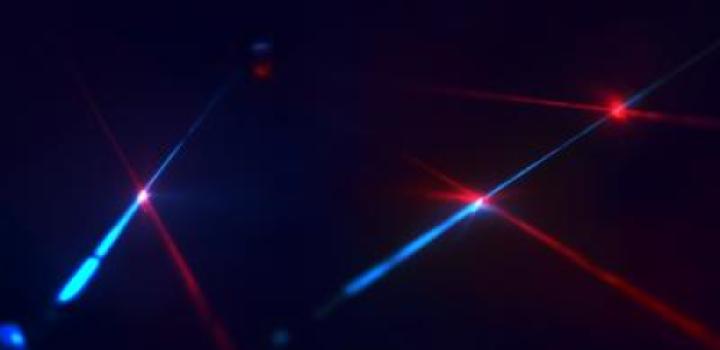
The realisation of quantum networks is one of the major challenges of modern physics. Now, new research shows how high-quality photons can be generated from 'solid-state' chips, bringing us closer to the quantum 'internet'.
 The number of transistors on a microprocessor continues to double every two years, amazingly holding firm to a prediction by Intel co-founder Gordon Moore almost 50 years ago.
The number of transistors on a microprocessor continues to double every two years, amazingly holding firm to a prediction by Intel co-founder Gordon Moore almost 50 years ago.
If this is to continue, conceptual and technical advances harnessing the power of quantum mechanics in microchips will need to be investigated within the next decade. Developing a distributed quantum network is one promising direction pursued by many researchers today.
A variety of solid-state systems are currently being investigated as candidates for quantum bits of information, or qubits, as well as a number of approaches to quantum computing protocols, and the race is on for identifying the best combination. One such qubit, a quantum dot, is made of semiconductor nanocrystals embedded in a chip and can be controlled electro-optically.
Single photons will form an integral part of distributed quantum networks as flying qubits. First, they are the natural choice for quantum communication, as they carry information quickly and reliably across long distances. Second, they can take part in quantum logic operations, provided all the photons taking part are identical.
Unfortunately, the quality of photons generated from solid-state qubits, including quantum dots, can be low due to decoherence mechanisms within the materials. With each emitted photon being distinct from the others, developing a quantum photonic network faces a major roadblock.
Now, researchers from the Cavendish Laboratory at Cambridge University have implemented a novel technique to generate single photons with tailored properties from solid-state devices that are identical in quality to lasers. Their research is published today in the journal Nature Communications.
As their photon source, the researchers built a semiconductor Schottky diode device containing individually addressable quantum dots. The transitions of quantum dots were used to generate single photons via resonance fluorescence -- a technique demonstrated previously by the same team.
Under weak excitation, also known as the Heitler regime, the main contribution to photon generation is through elastic scattering. By operating in this way, photon decoherence can be avoided altogether. The researchers were able to quantify how similar these photons are to lasers in terms of coherence and waveform -- it turned out they were identical.
"Our research has added the concepts of coherent photon shaping and generation to the toolbox of solid-state quantum photonics," said Dr Mete Atature from the Department of Physics, who led the research.
"We are now achieving a high-rate of single photons which are identical in quality to lasers with the further advantage of coherently programmable waveform -- a significant paradigm shift to the conventional single photon generation via spontaneous decay."
There are already protocols proposed for quantum computing and communication which rely on this photon generation scheme, and this work can be extended to other single photon sources as well, such as single molecules, colour centres in diamond and nanowires.
"We are at the dawn of quantum-enabled technologies, and quantum computing is one of many thrilling possibilities," added Atature.
"Our results in particular suggest that multiple distant qubits in a distributed quantum network can share a highly coherent and programmable photonic interconnect that is liberated from the detrimental properties of the chips. Consequently, the ability to generate quantum entanglement and perform quantum teleportation between distant quantum-dot spin qubits with very high fidelity is now only a matter of time."

 Previous page
Previous page Back to top
Back to top







